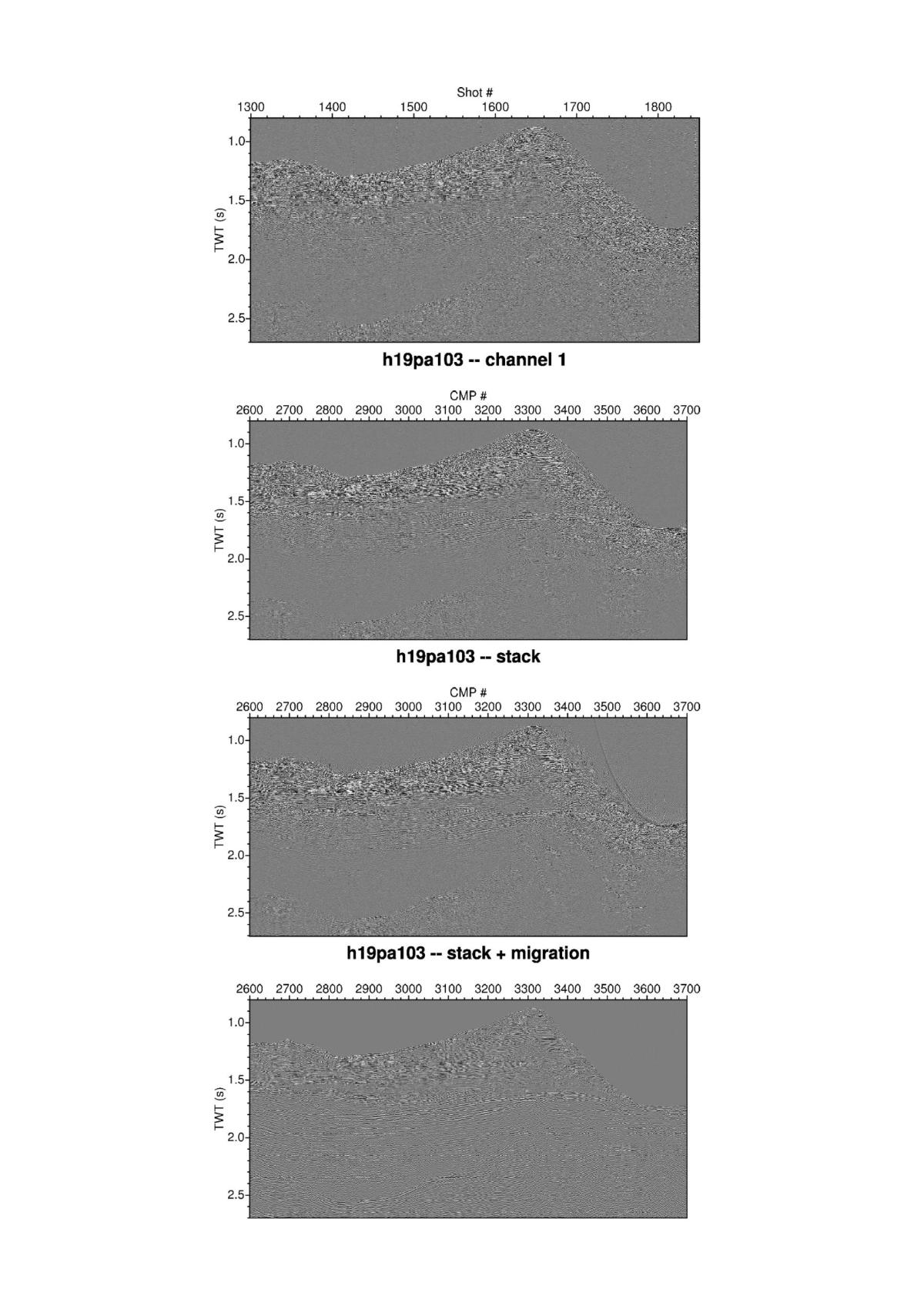The acquisitions were made using the seismic tool of the Géoazur laboratory. This seismic tool includes a multichannel streamer (24 channels, 12.5 m / channel), a Sercel mini-GI air gun (24 ci / 24 ci), a Luchard compressor and a Delph digital acquisition system.
For this "training" campaign, the 18 students were divided into 2 groups who were to go out at sea in turn. Group 1 acquired one seismic profile during day 1. Group 2 was unable to go out at sea during day 2 due to poor weather conditions. Group 1 performed tests, such as a change in the depth of immersion of the streamer and the air gun (by changing the length of the ends connecting the air gun/the head of the streamer to the buoy ensuring its flottability), a change in the frequency of the shots, during the day 3 along the profile acquired during the day 1 in order to demonstrate and understand the impact of the acquisition parameters on the final seismic image. Group 2 was able to acquire one seismic profile during the day 4 which was reduced to the morning only to allow the disembarkation of the seismic material during the afternoon.
The 2 acquired seismic profiles were analyzed and processed in the classroom by the students, using a standard processing chain, perfectly suited to the acquisition device. This chain was developed for this data. It consists of a suite of scripts using executables of the open source CWP / Seismic Unix processing software. This modularization in the form of scripts makes it possible to divide the processing into different stages, for a good understanding of the contribution of each by the students who can see the contribution on the data. The chain includes:
1- Import of raw SEGY data, converted to SU format and resampled (with anti-aliasing filter);
2- Examination of data under their initial CSG (Common Shot Gathers) sequence and examination of trace headers;
3- Extraction of the sets in common offsets for analysis of the raw data by classes of offsets (Quality Control): identification of the artefacts (multiples, multiples folded from previous shots, diffractions) and analysis of the direct wave at the different offsets to reconstruct the characteristics of the acquisition geometry (measurement of effective offsets); spectral analysis for measuring the cutoff frequencies (notches) from which the depths of each element of the streamer are deduced - reconstruction of the immersion profile of the streamer;
4- Editing of headers to define a CMP sequence;
5- Editing traces to suppress the signal of any noisy channels;
6- Sorting in CMP and examining data in this form;
7- Correction NMO and stack, either at the speed of the water, or with a gradient under the bottom of the water (previously pointed then on the section with minimum offset) - examination on CMP after NMO to check the good flattening of the thinking hyperbolas
8- Possible test of different stack speeds to show the low dependence of the result, due to the short range of offsets covered by the device;
9- Comparison of the stacked section with the common offset sections previously extracted to verify the improvement of the signal / noise ratio by summation (in particular on deep reflectors);
10- Stolt post-stack migration at water speed;
11- Post-processing with Fourier domain filtering, either uniform or time-varying filter with a narrower bandwidth under the Messinian horizons to take advantage of the lower frequency content under these horizons; equalization of ranges by AGC;
12- Meticulous mute above the bottom of the water and SEGY re-export for large format final plot (for interpretation).

This processing is done during 2 half-days of work in the computer room with the students who practice the whole chain individually (3h of courses, 5h of practicals).
The training is also supplemented by a 4-hours course / practicals on wide-angle seismic, emphasizing the complementarity of this geophysical prospecting method with the seismic reflection practiced during the training.
Finally, interpretation of seismic-reflection images allows an application of the principles of seismic stratigraphy seen theoretically during courses, with an initiation to the identification of sequences of reflectors and seismic units based on the seismic facies, geometries of boundary reflectors, etc. The whole is restored in the evolving tectono-sedimentary framework of the margin and the Ligurian basin.



